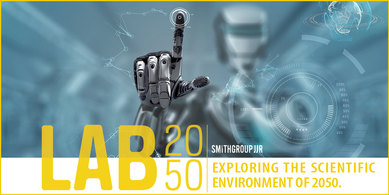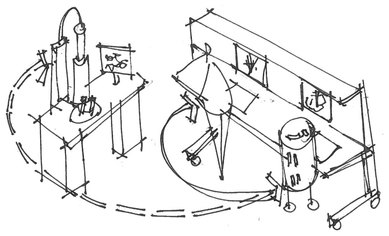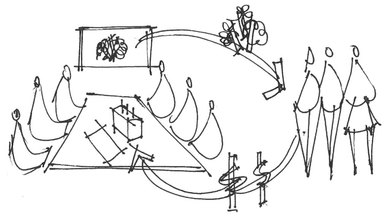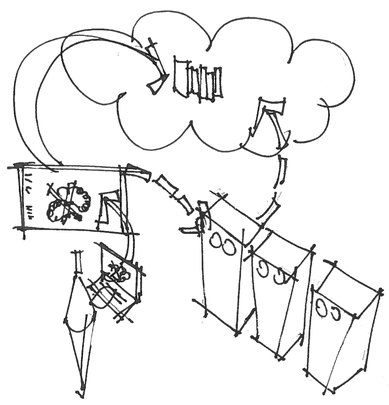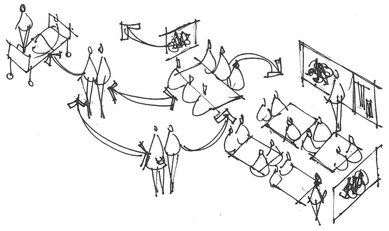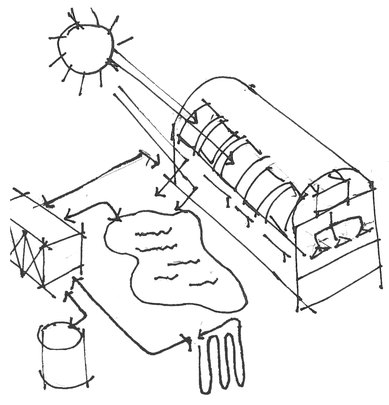LAB2050 – Top 10 Takeaways
The following top ten points consolidate the findings of LAB2050, which is an initiative SmithGroup embarked on to dig deep into the scientific trends, new technologies and economics that will shape the design concepts of research laboratory environments in the coming decades. SmithGroup and our Client Advisors advocate these foci for the near and long-term future. Although we anticipate that they will change and flux over time, we continue to plan and design 40 to 60 year buildings on a daily basis. This makes it important to constantly consider how advanced facility design will respond to the future technological and user needs outlined in our findings.
Design for Agility – As technology evolves, physical spaces will need to remain flexible, nimble and agile to accommodate new requirements.
Automated and Decentralized Experiments – Technology and robots will allow for remote manipulation of experiments, which will affect sizing, space, location and safety protocols, and will ultimately protect science from occupants and vice versa.
Partnerships – As government money continues to shift and decline, unique partnerships between universities, corporations and developers will continue to trend upwards. It will have a profound impact on research, pedagogy, funding, design and project delivery.
Centers for Collaboration – Adaptable space is required as the line between physical and digital continues to blur. Spaces will continue to support teams but must develop enough to accommodate a group sitting next to one another just as successfully as one that spans several time zones.
Finance Driven – Multiple sources of money will become the only way for institutions to successfully grow, operate and innovate. Science endeavors will have to shift focus beyond research to include financial feasibility.
Big Data – Data will continue to be collected at astronomical rates. Storage will be essential and will become a key component in the efficiency of places through energy reuse from servers and data centers. Designers will use collected data to create intelligent buildings that are not just the vehicle for research, but part of the research.
Place Will Matter – People will continue to make preference-based choices about where they live and what they do. The desire to live in a particular place drives our quality of life. Some places will be more competitive or more attractive than others, independent of how many virtual environments and scientists and breakthrough discoveries are occurring there.
Global Access to Information – As public research and data continue to grow, global access will become the norm. Networks, from around the world, will be accessed by informatics experts to study, analyze and draw conclusions. This could have a profound impact on the more less known global issues and diseases with efficient and inexpensive ways to research and solve pressing concerns.
Intelligent Space – Designers will have more data to push evidence-based design and create buildings and spaces that respond to users and need. This will include automatic changes in ventilation, lighting, room colors and technology needs just based on the people (or robots) entering the room.
Efficiency and Resiliency – Cost and climate change will require reliable energy sources for buildings. This will include, but is not limited to, hybrid geothermal and heat-reuse strategies that provide low-entropy systems to buildings, campuses and beyond. Structures will withstand and thrive during disasters.
